50 years of Haitian migration to South Florida: A story of protests, detention and triumph
They arrived 50 years ago, fleeing dictatorship and death. Along the treacherous, three-week ocean journey, the seafaring Haitian asylum seekers traded their shoes for food and water in Cuba, and were briefly jailed in the Bahamas before being asked their final destination.
“Miami,” they all said.
When their leaking, 56-foot wooden sailboat finally made landfall 40 miles north of Miami in Pompano Beach on Dec. 12, 1972, there was no family or Haitian community to welcome them, or protesters lining the shorelines demanding their freedom.
“They arrested us, put us in jail,” recalled Marie Bernard, who was among the 65 passengers, including two children, aboard the Saint Sauveur, the first documented boat of Haitian refugees to arrive in South Florida.
“They said there were others who would be coming behind us and they didn’t want them to ask why they were detained and we were not,” she said. “So we accepted to be jailed.”
Bernard left Haiti on Nov. 23, 1972, after her first husband, an army officer, was killed by the Duvalier regime. Fear of a similar fate led her to board a stolen wooden boat and set sail for Florida.
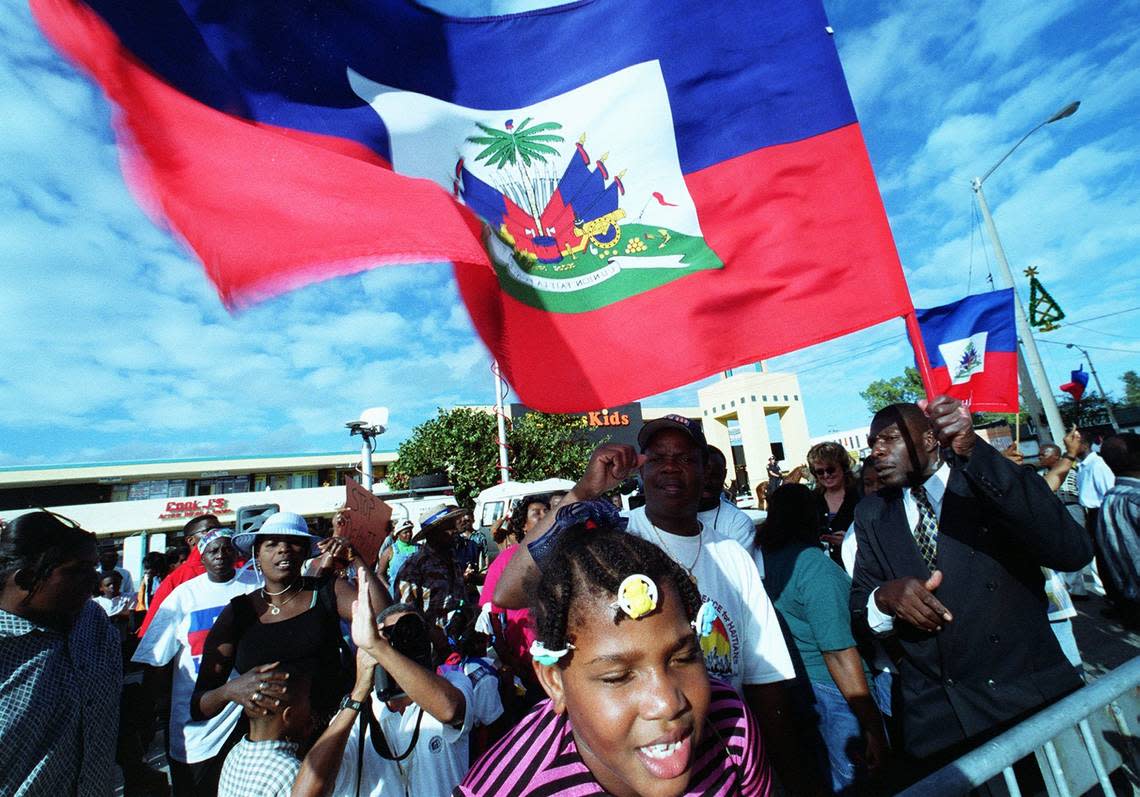
Ultimately the Haitian migrants banded together with a group of Black Baptist ministers, Catholic priests and Haitian exiles in New York and began challenging U.S. immigration and detention policies. In the process, they also gave birth to a new South Florida community of mostly Black, Creole-speaking refugees with French-sounding surnames.
When the U.S. Immigration and Naturalization Service denied Bernard’s claim for political asylum, she became a plaintiff in the first challenge by Haitian “boat people” of U.S. government policy.
Then known as Marie Jean Pierre, she and 215 other Haitians who had fled to the U.S. on boats between 1972 and 1973 sued the U.S. government in federal court. The class-action lawsuit, Pierre v. U.S., was led by renowned civil rights and immigration attorney Ira Gollobin. Though the group’s claim of racial bias and unequal treatment of Haitian migrants wasn’t successful, it set the tone for what was to come.
In 1980, after 5,000 Haitian boat people had been denied political asylum, one discrimination case — Haitian Refugee Center v. Civiletti — claiming that the U.S. government practiced “blatant racism,” was successful. In addition, pressure on the U.S. by the Washington, D.C.-based Haitian Refugee Project’s Fritz Longchamp, who later became a foreign minister of Haiti, and Michael Posner, who later became an assistant secretary of state, led the Carter administration to establish the Cuban-Haitian Entrant Act of 1980.
“Those of us, old-timers, we worked hard in the community. They called us crazy because we were protesting everywhere in the streets,” said Bernard, who was able to adjust her immigration status under the new law and become a legal permanent resident, which allowed her to reunite with the two children she had left behind in Haiti.
Other immigrants who were able to obtain permanent legal status “would say, ‘Where did those Haitians, who have come to dirty the image of people here, come from?’ But we held our heads high, even up until now,” Bernard said. “We respected the law, we lived our lives. I am going to have 50 years here in this country, and I have never had a problem.”
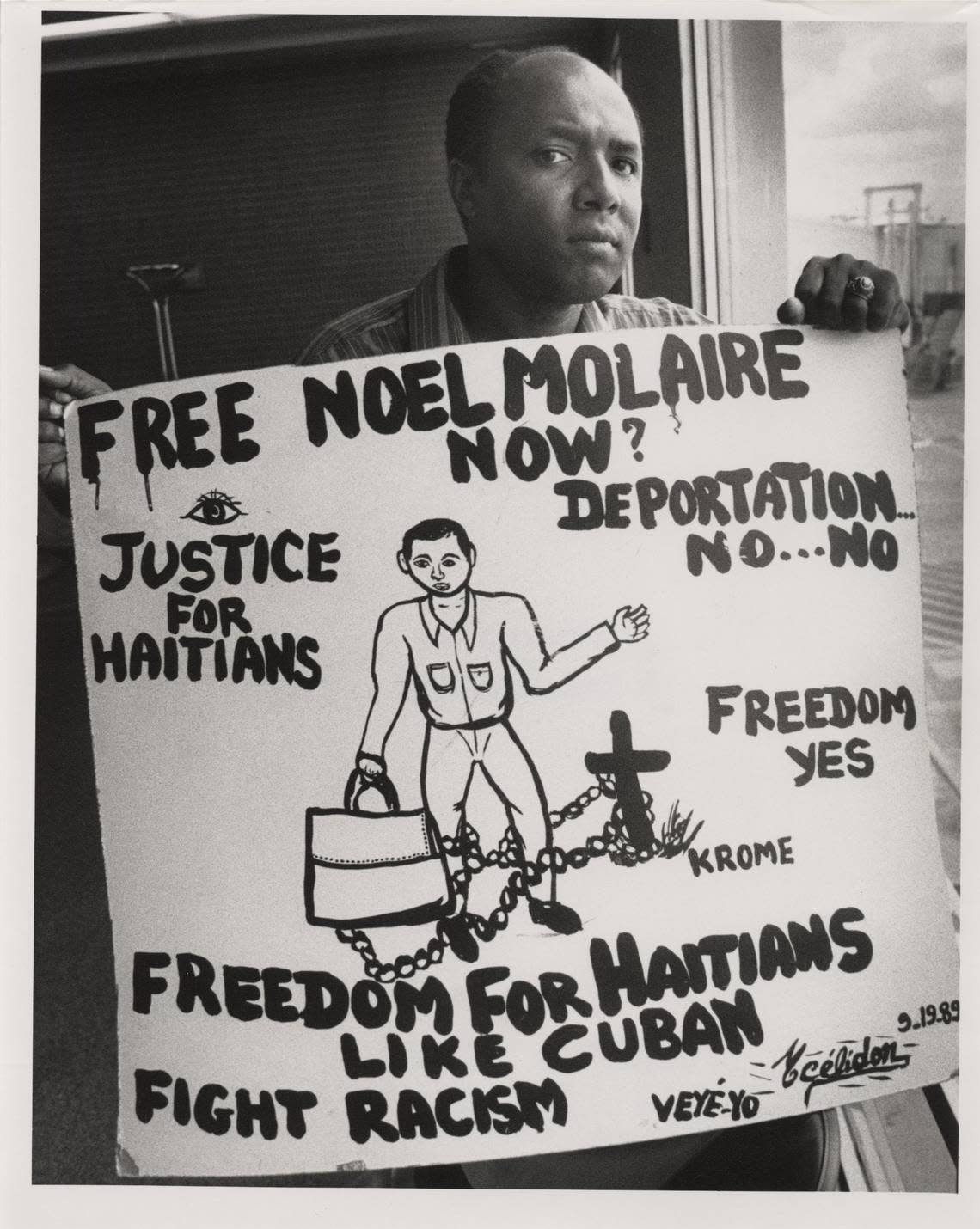
It wouldn’t have been possible, she said, had it not been for the legal challenges, the protests and those early champions of Haitian rights, like the Rev. Jacques Mompremier — whose Friendship Missionary Baptist Church in Miami served as a temporary home for her and the other first refugees — and the Rev. Gérard Jean-Juste, a Catholic priest.
At 79, Bernard has lived to welcome three generations of family. Her five children have become homeowners, medical professionals and U.S. Army and Air Force veterans, as well as parents and grandparents.
That pioneering legacy, along with so many other moments both triumphant and sad, is being commemorated in what South Florida’s Haitian community is calling the “December 12 Project: The day we became boat people.”
“They represent all that is strong and resilient in our culture,” said Sandy Dorsainvil, who is helping to organize a gathering at 6 p.m. Monday at the Little Haiti Cultural Center, 212 NE 59th Terr. “Their victory over the cold sea shows our children every day that they can do anything.”
The year-long commemoration will trace the Haitian-American community’s rise in South Florida through reflections, storytelling, music, poetry, panel discussions and other activities.
Haitians still taking to the sea in deadly voyages
“Those who have been allowed to stay in the U.S. have made tremendous strides during the past 50 years,” said Marleine Bastien, a Haitian community and immigration activist who last month became the second Haitian American and first woman of Haitian descent elected to the Miami-Dade County Commission.
Bastien said the journey of the first Haitian refugees and the legal battles they waged to stay in the United States, while worthy of celebration, are also reminders of how little has changed. Five decades later, Haitians are still taking to the sea in deadly voyages, only to be detained and deported back.
Instead of fleeing dictatorship, they are being pushed by social upheaval, gang violence, kidnappings and political turmoil, all made worse by last year’s assassination of Haitian President Jovenel Moïse.
“President Biden has deported 24,000 people at a time when Haiti is reeling under the worst political conditions in its recent history,” Bastien said. “People are basically refugees in their own homeland. They cannot live in their own homes; women have to protect their little girls so that they are not gang raped, girls as young as five years old.
“This is a country at war,” she added. “This bleak, sad history clearly tells us that U.S. policy toward Haiti must change; we must address the root causes of this risky, oftentimes deadly migration to create safe conditions for Haitians to stay home.”
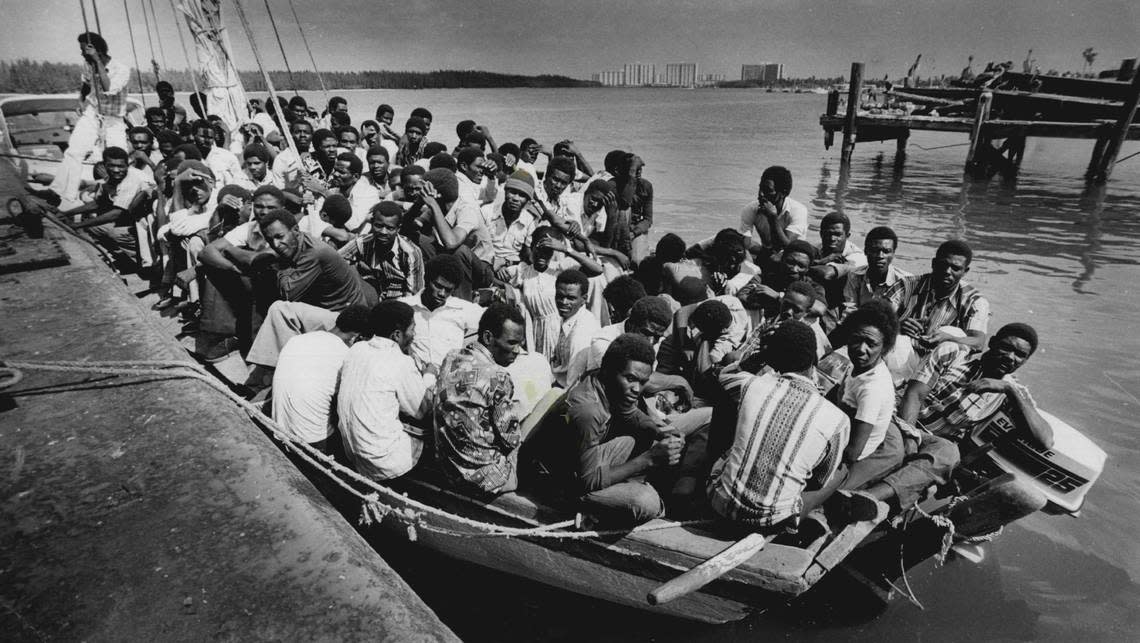
Gepsie Metellus, the executive director of Sant La Haitian Neighborhood Center, a community organization in North Miami, said she hopes the Haitian community’s story in South Florida can encourage change back home. At the very least, she said, she hopes that the sharing of stories will inspire younger generations of Haitian Americans.
“We are a relatively strong Haitian-American community, in spite of everything,” Metellus said. “The story for me is of our triumphant spirit.”
That triumph can be seen in the number of Haitian Americans who currently hold elected offices, serve as the heads of private and professional organizations, and have made a name for themselves in the fields of education and medicine.
But the going was difficult for those first arrivals. While the first group was welcomed by Black pastors and other religious leaders, the subsequent waves got a lukewarm reception, labeled “boat people” and encountering a U.S. immigration system bent on sending them back.
READ MORE: HISTORY OF HAITI From rebellious beginnings, Haiti has been beset by violence, meddling
As their numbers continued to rise, their presence fueled racial and ethnic tensions. Then in the early 1980s, at the height of the AIDS epidemic, the U.S. Centers for Disease Control and Prevention identified Haitians as being among the four risk groups for the new disease. In March 1983, the CDC said the highest number of AIDS cases were among homosexuals, hemophiliacs, heroine users and Haitians. They became known as the “Four-H Club.”
“In spite of that, you see a sense of soldiering on, you see people working to ensure that they are perceived as human beings, human beings who are worthy of safety, worthy of being valued, worthy of dignity,” Metellus said.
Among their achievements in Miami-Dade County: the election of the first Haitian American, Philippe Derose, to public office in 1993 when he became a councilman in the Village of El Portal, and the first mayor in the U.S. in 2000 when he headed the village. A year later, Haitians made history again when they elected Josaphat “Joe” Celestin as the mayor of North Miami, the first Haitian American to become mayor of a sizable U.S. city. That same year, Fred Seraphin became the first Haitian-American judge in Miami-Dade County.
With several Haitians elected to the Florida Legislature, the community would make history again in 2010, when Jean Monestime, who arrived in Miami by boat in 1981 from Haiti, became the first Haitian American to serve on the Miami-Dade County Commission. Twelve years after his election, Monestime, who was term limited, has been replaced by Bastien.
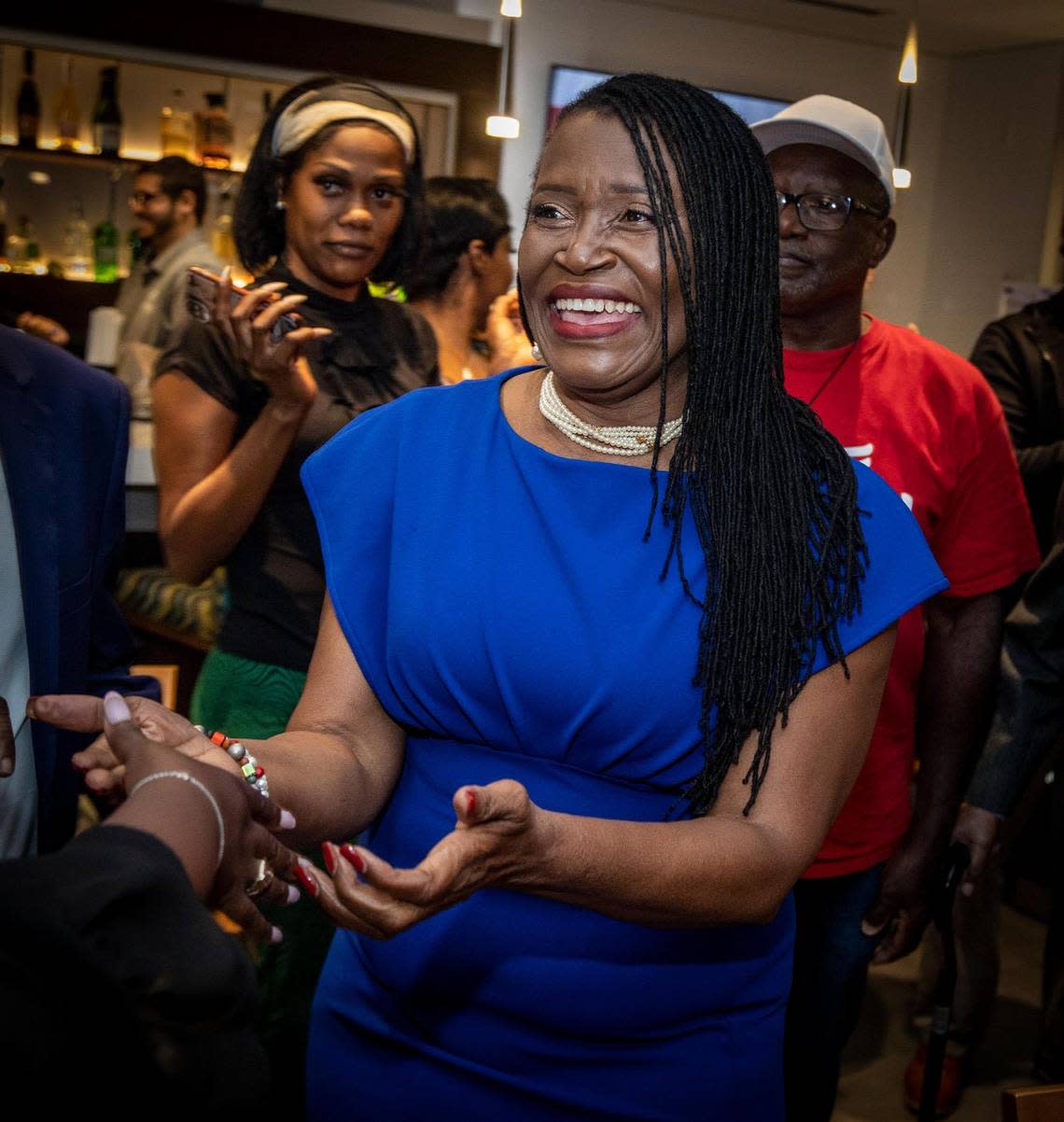
A grassroots activist who once worked at the Haitian Refugee Center under the supervision of attorney Steve Forester — one of the community’s consummate immigration advocates — Bastien arrived here in the early 1980s from Haiti, herself fleeing the Duvalier dictatorship.
“Haitians contribute greatly to build the social, political and economic fabrics of their adopted country,” she said. “Given the same opportunities under the right conditions, they can do the same in their homeland.”
The beginning of U.S. immigration detention policy
Abel Jean Simon Zephir was 16 when he left Haiti on Aug. 15, 1973, and landed in South Florida with 61 other Haitian refugees. Zephir knew some of the passengers who had arrived with Bernard on the first boat, and thought his entry into the U.S. would end up being much the same: a brief detention then release.
Instead, he spent nine months in detention, the beginning of U.S. immigration detention policy as it exists today.
“Even though some of us told immigration very clearly why we left Haiti, because of political persecution, it didn’t matter,” he said. “Their goal was to throw us in jail.”
Zephir’s boat was the third one to arrive in South Florida loaded with Haitian refugees, and the environment was starting to change for asylum-seeking Haitians. During his imprisonment, he and his fellow refugees were transferred from Florida to Texas.
Then, in the spring of 1974, a young Haitian named Turenne Deville was denied asylum and killed himself inside a Miami jail rather than face being sent back to Haiti.
Zephir said they learned the news from the director of the Texas facility, who gathered him and all of the other Haitians and said, “Bad news... One of you died last night.”
“Turenne Deville killed himself,” Zephir said, breaking down as he recalled the director’s words and attempt at consoling them. “That’s the only time I felt that the detention officer was a human being.”
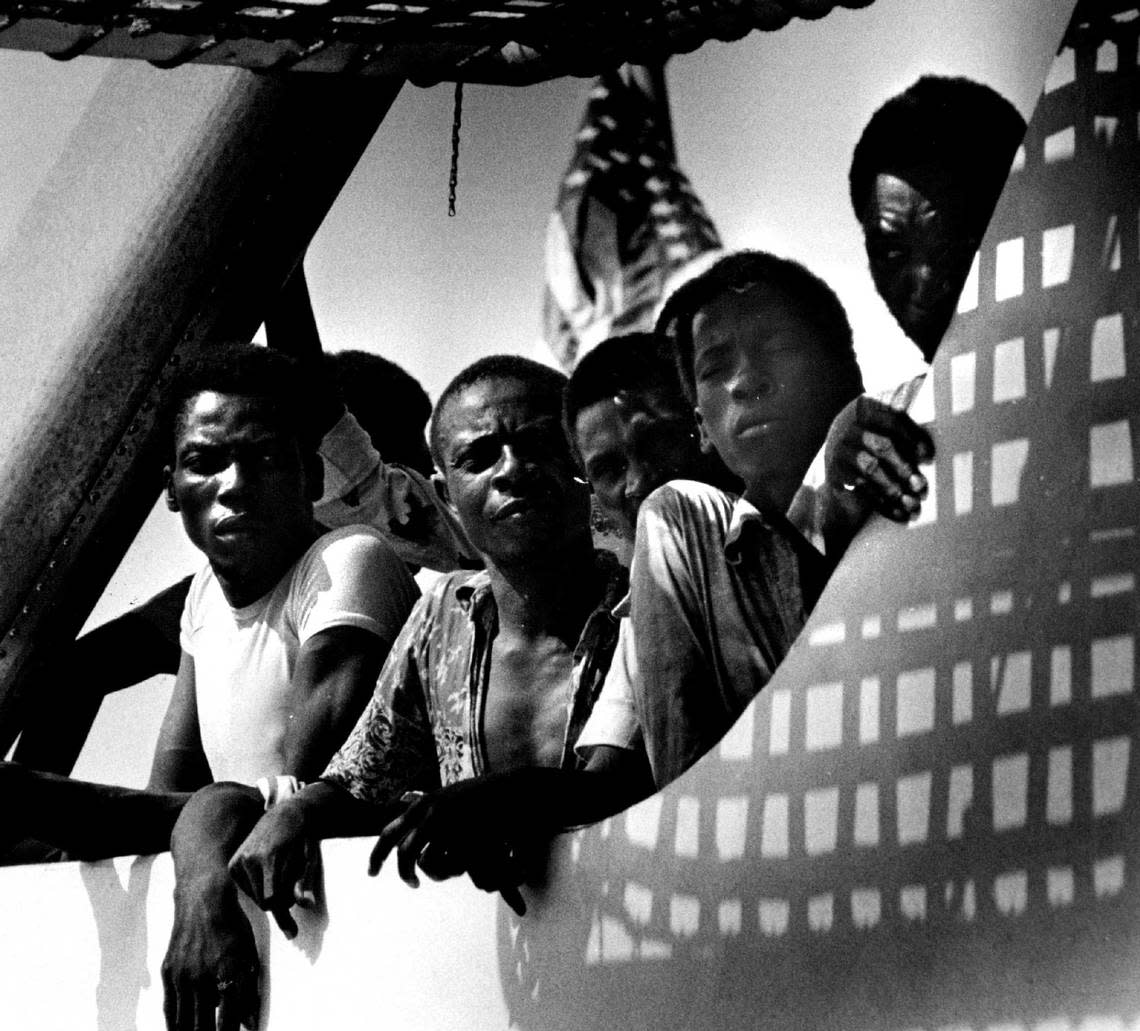
Zephir and his fellow Haitians were finally released, the result of the activism and legal action by Mompremier and his Haitian Refugee Center, which was then backed by the National Council of Churches. “They put us on a bus,” he said. “I arrived Saturday midday in Miami at the Haitian Refugee Center.”
Deville’s death became a turning point in the movement, Zephir said.
“You had a solid Haitian community in New York… you had a lot of Haitian students at Columbia University, you had a community of exiles,” he said. “They felt that [Deville’s death] was not acceptable because they themselves were victims of Duvalier’s regime,” Zephir said.
The Haitians in New York decided that the Haitians in Miami “needed our help,” Zephir said, and between 1973 and 1979, Miami’s Haitian community began getting reinforcements from up north.
Demonstrations, legal action and a maverick priest
Among those supporting the cause was Viter Juste, who rallied Haitians to protest a Miami-Dade School Board policy prohibiting children of undocumented Haitians from enrolling in school; Rulx Jean-Bart, a onetime student organizer at York College who became director of the Haitian Refugee Center, and the late Bernard Fils-Aimé. A former student organizer at Columbia University, Fils-Aimé, who died in Miami in 2020 from COVID-19 related illness, became one of the movement’s top strategists and go-to advisers.
The northern transplants also include Jean-Juste, the maverick Catholic priest who died in 2009. Known as Father Gerry, Jean-Juste was a priest in Boston who had visited Miami for two weeks in December 1977 before moving here permanently in 1978.
A controversial figure who once picketed the Miami archdiocese and called the archbishop a racist, Jean-Juste was an agitator and Haitian crusader whose presence brought prominence to the Haitian Refugee Center and the Haitian rights movement, as he demanded the release of those detained. His grassroots group, Veye-Yo, could rally Haitians out into the streets at a moment’s notice.
“If it wasn’t for Jean-Juste and his charisma, and ability to organize people, I don’t think that there would be a Haitian community here. It was a combination of a coordinated, legal and political effort, just like what Martin Luther King did,” said attorney Ira Kurzban, who joined the Haitian Refugee Center in the late 1970s as a young lawyer. “Those who say Jean-Juste is the Martin Luther King of the Haitian community, it’s true.”
One of the United States’ foremost immigration lawyers, Kurzban was recruited to work with the Haitian Refugee Center by Gollobin, the Newark-born immigration attorney who, in addition to litigating Bernard’s class action federal lawsuit, litigated other Haitian cases challenging U.S. immigration law.
“When those boats first started to come, the Saint Sauveur, they actually treated the people similar to the way they treated Cubans. It was kind of an open arms policy; they let people in,” Kurzban said. “But as more boats started to come the government realized that they didn’t have a mechanism to treat people in any kind of coordinated and legalistic way.
“The whole forces of the federal government in 1977 and 1978 were against Haitians coming here,” he added. “They were doing everything they could. They put people in removal proceedings, they expedited removal proceedings.”
Bernard, who is saddened by her homeland’s ongoing troubles and the fact that Haitian migrants are still being turned away from the U.S., said Jean-Juste doesn’t get enough credit.
“Every day Haitians should raise their hands to the heavens, and light a candle for him and say a prayer for him,” she said.
Zephir, 65, who also credits those early leaders, also pays homage to the Black civil rights movement.
“After 50 years, we can proudly say that the history of the Haitian is a proud one, [it’s] the history of the American people. We are citizens. Like everybody else we have the right, we have the opportunity,” he said, adding, “we have to continue to fight.”
